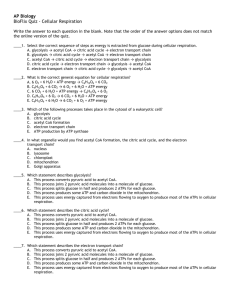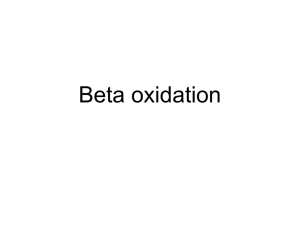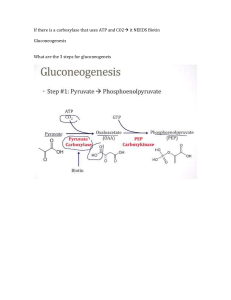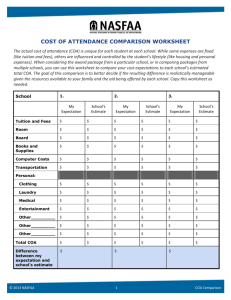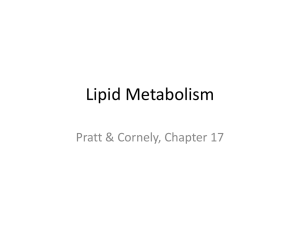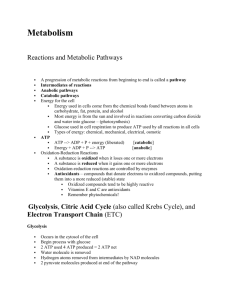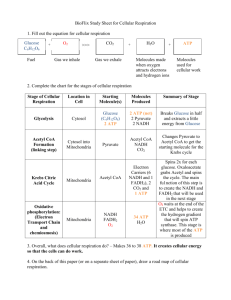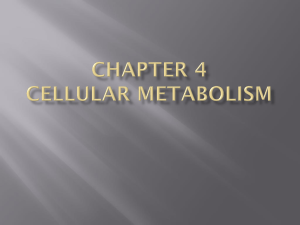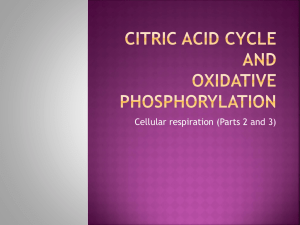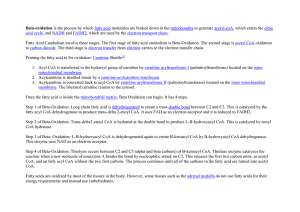BHS 150.1 – Course I Date: 10/11/12, 1st hour Notetaker: Laurel
advertisement
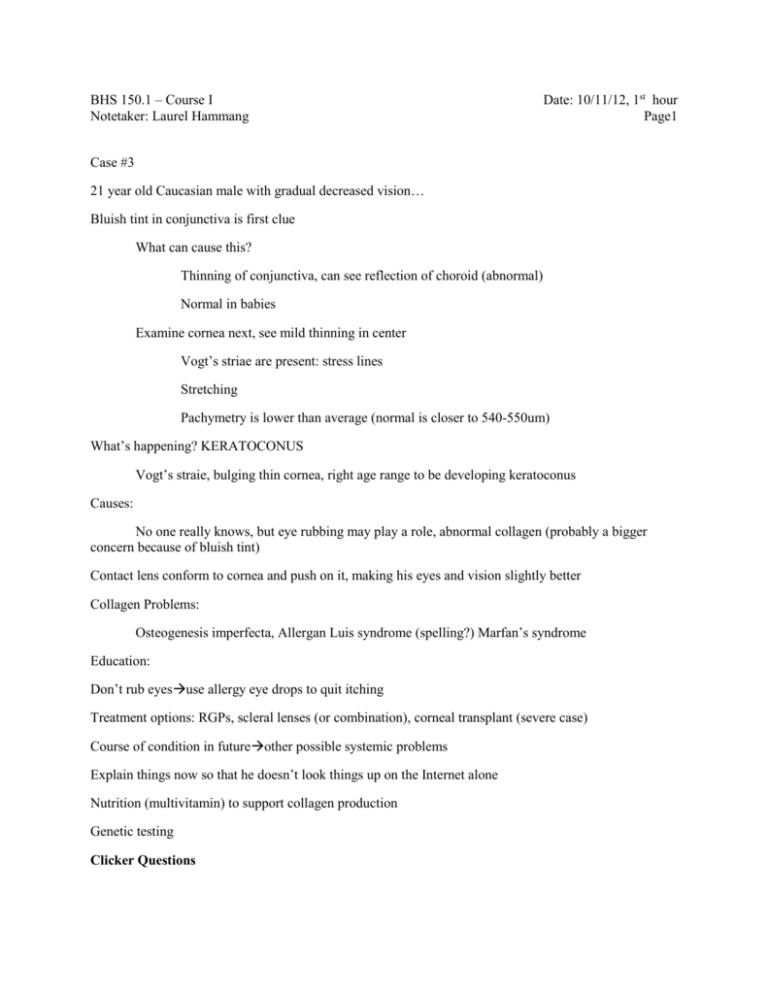
BHS 150.1 – Course I Notetaker: Laurel Hammang Date: 10/11/12, 1st hour Page1 Case #3 21 year old Caucasian male with gradual decreased vision… Bluish tint in conjunctiva is first clue What can cause this? Thinning of conjunctiva, can see reflection of choroid (abnormal) Normal in babies Examine cornea next, see mild thinning in center Vogt’s striae are present: stress lines Stretching Pachymetry is lower than average (normal is closer to 540-550um) What’s happening? KERATOCONUS Vogt’s straie, bulging thin cornea, right age range to be developing keratoconus Causes: No one really knows, but eye rubbing may play a role, abnormal collagen (probably a bigger concern because of bluish tint) Contact lens conform to cornea and push on it, making his eyes and vision slightly better Collagen Problems: Osteogenesis imperfecta, Allergan Luis syndrome (spelling?) Marfan’s syndrome Education: Don’t rub eyesuse allergy eye drops to quit itching Treatment options: RGPs, scleral lenses (or combination), corneal transplant (severe case) Course of condition in futureother possible systemic problems Explain things now so that he doesn’t look things up on the Internet alone Nutrition (multivitamin) to support collagen production Genetic testing Clicker Questions How many moles of ATP are produced when one mole of acetyl coA is completely oxidized to carbon dioxide and water (assume the use of the glycerol phosphate shuttle)? 12 ATP (Get 36/38 from Glucose) The role of the electron transport chain in the production of ATP is to Accept electrons from NADH and then pump protons from the matrix to the intermembrane space. The role of the ATP synthase in the production of ATP is to allow protons to flow down their concentration gradient, which provides energy to make ATP. Why are we concerned about learning the ETC and oxidative phosphorylation (energy production)? the corneal endothelial cells need lots of energy to keep the cornea clear and hydrated appropriately to keep all the pumps working and maintaining the appropriate concentrations Kreb’s cycle occurs in mitochondria in endothelial cells FA synthesis allows provides lots of energy (storage of glucose) How do we get energy from the FAs? (mostly found in membrane-NOT in mitochondria) break down (oxidation of) FA in mitochondria to get most energy out of them (where Krebs and ETC occurs) shuttle them into mitochondria using Fatty acyl CoA and carnitine activate FA by adding high energy S bond onto it (Acyl CoA synthetase) USE 2 ATPs TO ACTIVATE Fatty Acyl CoA can move across outer membrane freely Fatty Acyl Coa needs carnitine acyl transferase to get into inner membrane: transfers FA from CoA to carnitine, so carnitine can carry FA across inner membrane Carnitine acylcarnitine translocase moves carnitine back into intermembrane space to shuttle more FAs inside carnitine deficiency=muscle weakness because can’t use FA as energy source FA Beta Oxidation is reverse of FA Synthesis (using the dimer, adding 2 Carbons on at a time) In each oxidation, undergo 3 reactions, shortening FA by 2 carbons (acetyl CoA) each time Also get 1 NADH (makes 3 ATPs) and 1 FADH2 (makes 2 ATPs) With a 16 Carbon FA, get 8 Acetyl CoAs, 7 NADHs, 7 FADH2s Series of Reactions: Oxidation: Dehydrogenase creates double bond and get 1 FADH2 (to accept electrons) Hydration: add water across double bond and get a NADH Oxidation: use CoA and thiolase to cleave bond to release acetyl coA (CoA attaches to end of chain) **Know order of reactions and what happens at the end pg 189 Answers: 7 repititions 7 of each FADH2: 2 ATPs NADH: 3 ATPs Total of 5 ATPs 5 ATPs * 7 cycles= 35 ATPs 8 acetyl CoA + 12 (1st clicker question)= 96 + 35 - 2 ATP (used at beginning) = 129 ATP *Test Questions will always ask about palmitate, not palmitoyl CoA, so must subtract the 2 ATP used *Look over this stuff for next Thursday: Review for final and we’ll go over the homework 4 (due Thursday).

